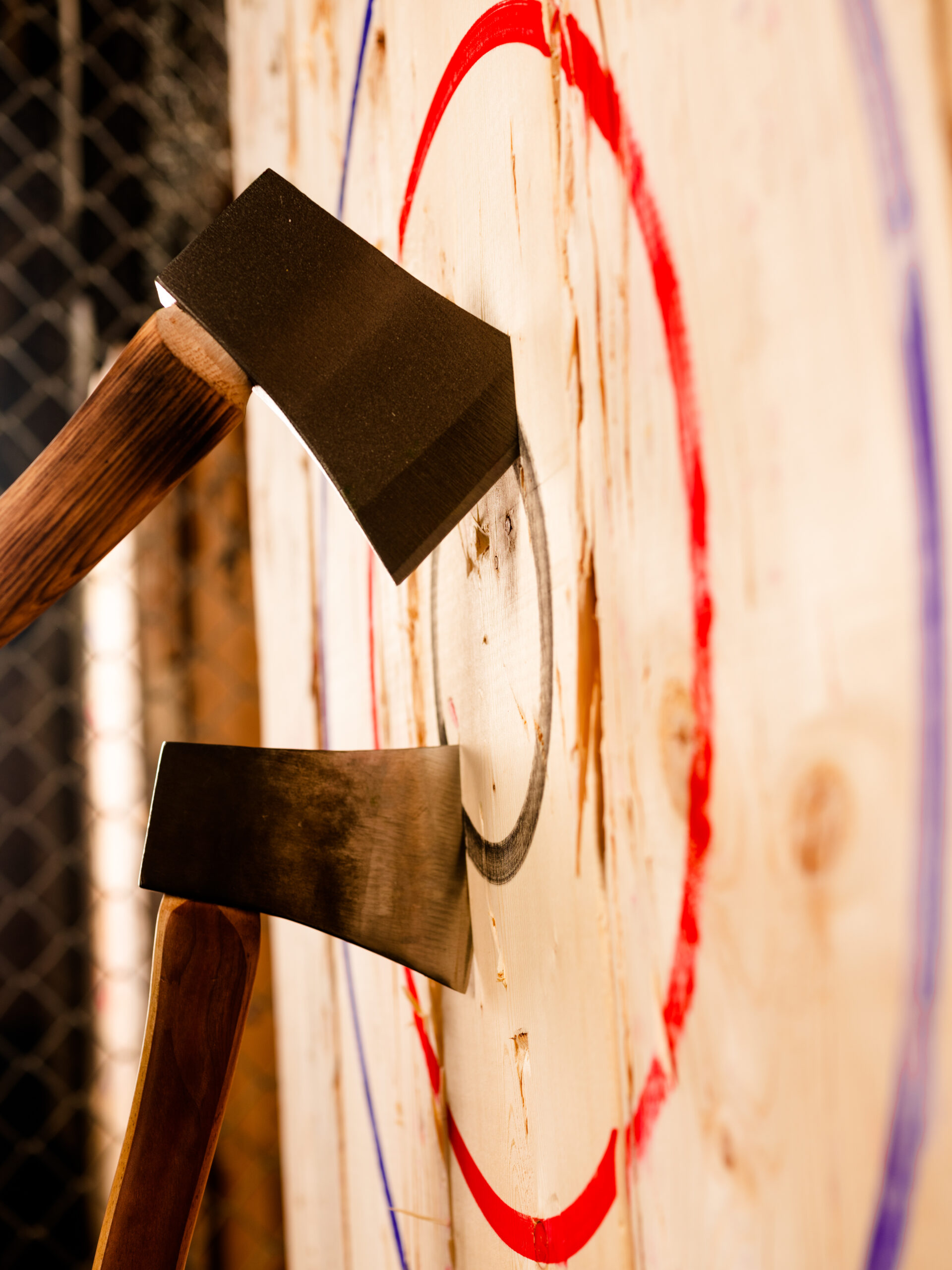The Enjoyable of Axe Throwing: How This Sport Integrates Skill and Adrenaline for a Great Time
Axe throwing has arised as a captivating sport that masterfully links the requirement for accurate ability with the rush of adrenaline, offering participants a appealing and distinct experience. The act of hurling an axe towards a target demands concentration and strategy, all at once promoting an atmosphere of friendship and friendly competition.
The Beginnings of Axe Throwing
Axe tossing, a recreational task that has actually gotten significant popularity in the last few years, traces its origins back to ancient times. This primitive sport go back to early human history, when axes were largely utilized as devices and weapons. The earliest records of axe usage in competitive contexts are discovered among the Celts and Vikings, that tossed axes for sporting activity in addition to in fight training. The method was not just a pastime yet a critical skill for survival and warfare.
Middle ages European warriors, particularly throughout the Middle Ages, exercised axe throwing as part of their martial training. The Francisca, a type of throwing axe made use of by the Franks, came to be legendary for its fatal accuracy. This traditional weapon was created to be tossed at enemy guards and shield, showcasing its dual utility in both sporting activity and fight.
In more current history, axe throwing saw a resurgence in the logging camps of The United States and copyright in the 19th and 20th centuries. Lumberjacks would participate in friendly competitors, examining their accuracy and toughness by aiming at wood targets. This development from a survival ability to a recreational activity has led the method for its contemporary revival, with specialized locations and leagues currently celebrating the sport globally.
Devices You Need
Understanding the rich history of axe tossing improves the admiration of the sport's contemporary version. Central to this thrilling activity is the devices, which is important for both security and performance. The key tool is, of training course, the axe. For recreational and competitive axe tossing, one of the most commonly made use of kind is the hatchet, commonly considering between 1.25 to 2 extra pounds with a handle size of around 16 inches. The axe needs to have a sharp, properly maintained blade and a deal with made from durable timber or composite product, ensuring a great hold and balance.
Similarly vital is the target. Guideline targets are built from wood, with softwood ranges like yearn or cottonwood being liked for their capacity to hold the axe and absorb. The target is usually split into 5 concentric circles, each with a certain factor worth, to facilitate scoring.
Security equipment, though typically forgotten, is vital. Safety gloves can boost hold and protect against blisters, while closed-toed footwear are a must to shield feet from gone down axes (axe throwing denver co). Finally, a well-lit, spacious tossing area, full with safety and security barriers, makes certain a regulated environment where individuals can concentrate on sharpening their skills.
Fundamental Techniques Described
Grasping the fundamental techniques of axe throwing is essential for both safety and efficiency. The leading hand should be positioned directly below the axe head, while the non-dominant hand sustains the end of the manage.
Your dominant foot ought to be a little onward, lining up with your target. This positioning help in keeping security and guiding power accurately in the direction of the target.

Safety First
Making sure safety and security in axe throwing is extremely important to producing an injury-free and delightful experience. Safety and security determines begin with the place design. A properly designed axe tossing facility attributes clear demarcations between tossing lanes, durable backgrounds to catch roaming axes, and non-slip flooring to prevent crashes. In addition, adequate lights is important to help participants preserve visual precision and spatial recognition.
Benefits of Axe Throwing
Axe tossing offers a myriad of benefits that prolong beyond easy recreation. Physically, it supplies a full-body exercise, engaging muscle mass in the arms, shoulders, back, and core. The recurring activity of tossing the axe also improves hand-eye coordination and fine motor skills. For those looking to enhance their general physical fitness, axe throwing can work as a dynamic and engaging kind of exercise.
Psychologically, axe throwing requires focus, technique, and accuracy, making it an exceptional means to hone cognitive skills. The focus required to hit the target can serve as a form of mindfulness, enabling participants to remove their minds and reduce tension. This mental involvement can be especially valuable in assisting individuals create better analytical abilities and mental durability.
Socially, axe throwing is commonly appreciated in group setups, fostering team-building and camaraderie. Whether as component of a corporate occasion or a casual trip with good friends, the sport encourages interaction and collaboration. Additionally, the communal experience of finding out and improving with each other can enhance connections and develop long lasting memories.
Verdict

The earliest records of axe use in affordable contexts are located among the Celts and Vikings, who tossed axes for sport as well as in battle training. Launch the axe when your hands are around at eye level, permitting the axe's all-natural turning to guide it towards the target.
A well-designed axe throwing facility features clear demarcations in between tossing lanes, strong backdrops to capture roaming axes, and non-slip floor covering to why not look here stop mishaps. Participants must be instructed on the correct means to manage and toss the axe, highlighting controlled, deliberate movements over forceful tosses.
In recap, find axe throwing stands out as a sport that masterfully integrates adrenaline, skill, and accuracy.